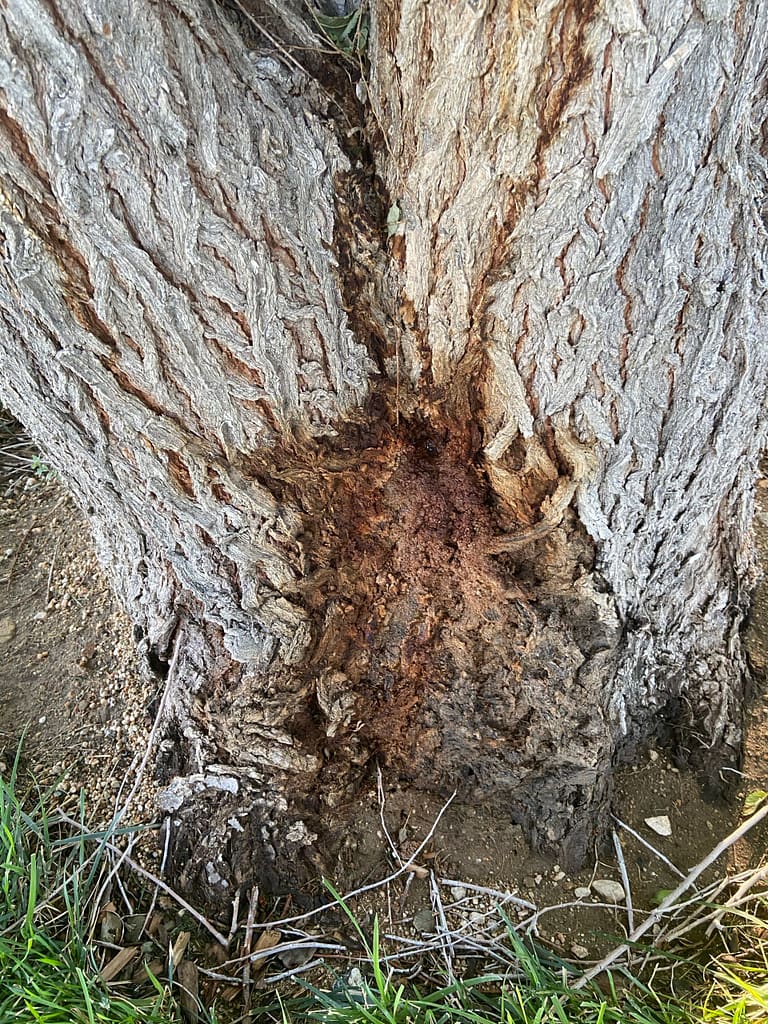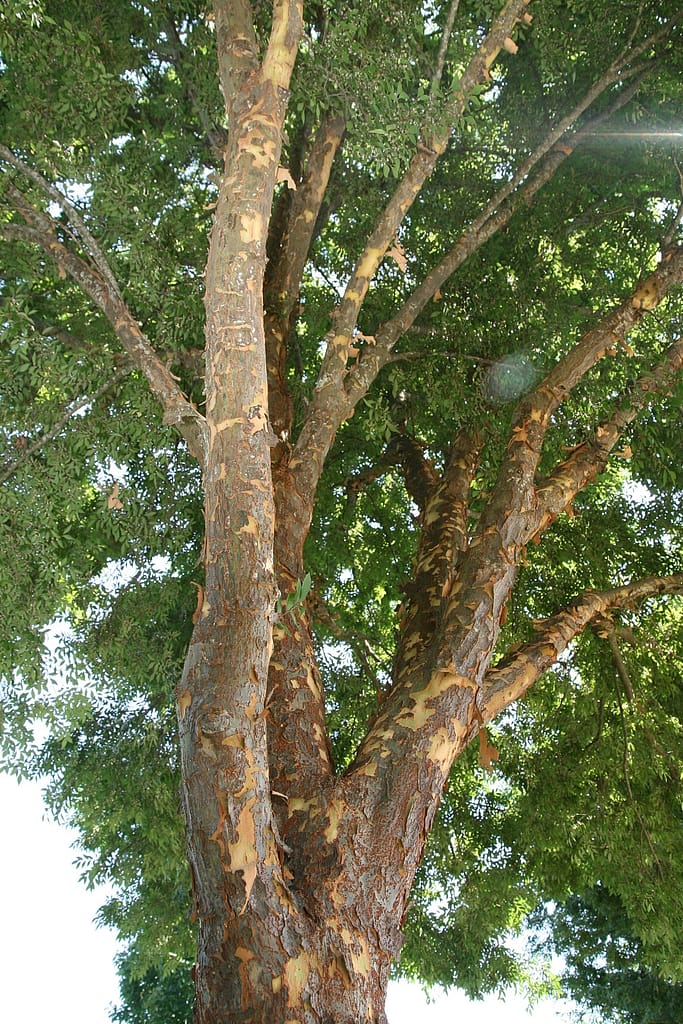
Chinese Elm trees are one of the trees I suggest most often. Chinese elm trees are one of the best fast growing shade trees for the desert. They are highly drought tolerant once established (though it will grow quicker and maintain its health better with additional water) and withstand the wind and heat without issue. They are pest and disease resistant, tolerate a huge range of soil conditions, and are inherently difficult to kill. A common phrase to describe an elm’s toughness is “An elms best and worst quality is that it is hard to kill”.
Why Plant A Chinese Elm?
- Very drought tolerant once established
- Beautiful flakey bark
- Highly resistant to Dutch elm disease
- Great pest resistance
- Fast growing shade tree
- Tolerates compacted, alkaline, poorly draining soils (which we have a lot of)
- Great street tree (Fits in compact spaces)
- Very tough, hard to kill species
Complaints About The Chinese Elm
- Staking and pruning required when young
- Susceptible to Anthracnose (not common in the high desert)
- Scale or mealy bugs can create honeydew that drips onto surfaces below
Additional Information About Chinese Elms
Chinese elm trees are commonly confused with Siberian elms, which are commonly referred to as “trash trees”. You can tell them apart by the bark, as Siberian elms have fissured bark and Chinese elms have mottled, flakey bark. Chinese elms do not share the disease and pest problems, common die back, or the rapid spreading through seeds of Siberian elms, which makes them much more suitable to be planted in your yard. Click here for more information and photos of the difference between Siberian elm and Chinese elm.


Chinese elms are resistant to Dutch elm disease, phloem necrosis, elm leaf beetle, and Japanese Beetle, and is completely immune to Gypsy Moth.
Chinese elms are very cold hardy. A study done at the Morton Arboretum found that the temperature at which half of the tissue dies is -29 °F (-34 °C).
Elms are commonly misinterpreted as having aggressive surface roots and it is often interpreted to mean that aggressive surface roots cause damage. However, Chinese elms are actually listed as one of the better trees to use in confined spaces and the inaccurate description of their roots that you might read somewhere should not be a deterrent to planting them. The University of Florida lists Chinese elm trees to be used in the following confined situations: sidewalk cutout (treepit), street without sidewalk, parking lot island that is less than 100 square feet, and highway medians.
With all that said, you can avoid any possible problems with their roots by planting them 10′ or more from any important hardscapes. They are routinely planted much closer without damage, but 10′ away from any tree is when all roots are under 2″ in diameter and lose the capability to expand and dislodge hardscapes as detailed in this article.
Varieties of Chinese elm abound. ‘Drake’ is a common landscaping alternative with more upright branches and a higher potential to remain evergreen. There are also dwarf varieties with smaller leaves that are more commonly used in bonsai cultivation, such as: ‘Catlin’, ‘Yatsubusa’, ‘Hokkaido’, and ‘Seiju’.
Right Tree, Right Place
Chinese elm trees can grow up to 50’+ in ideal conditions, but more commonly grow up to 30′ at maturity in our climate. The canopy can spread up to 50-70′, but more commonly 35′ wide. Knowing this we can deduce that one should not plant this tree:
- Close to your house (within 10′)
- On top of your septic tank cleanout
- Immediately adjacent to any hardscape.
Toxicity
California Poison Control System – https://calpoison.org/topics/plant
This plant is not listed as toxic by the California Poison Control System.
